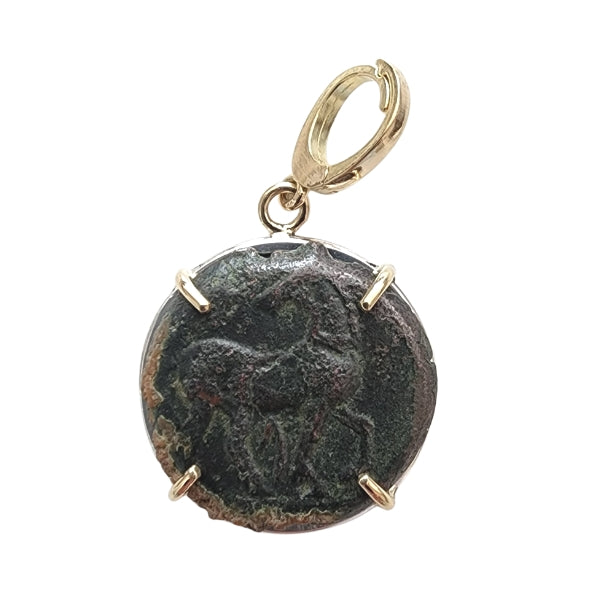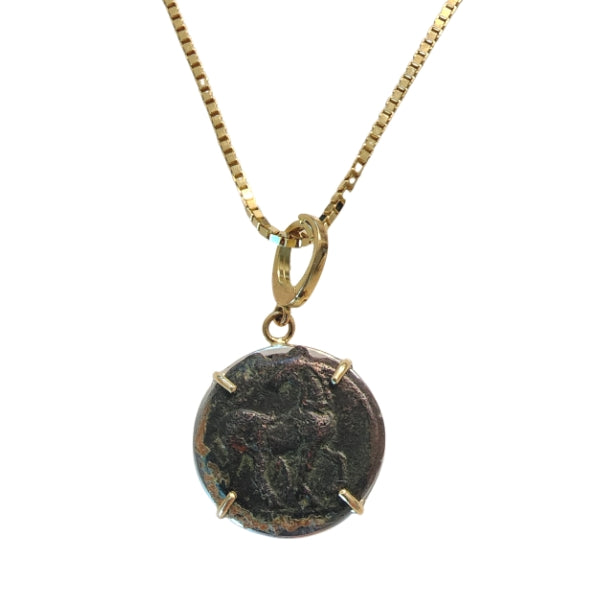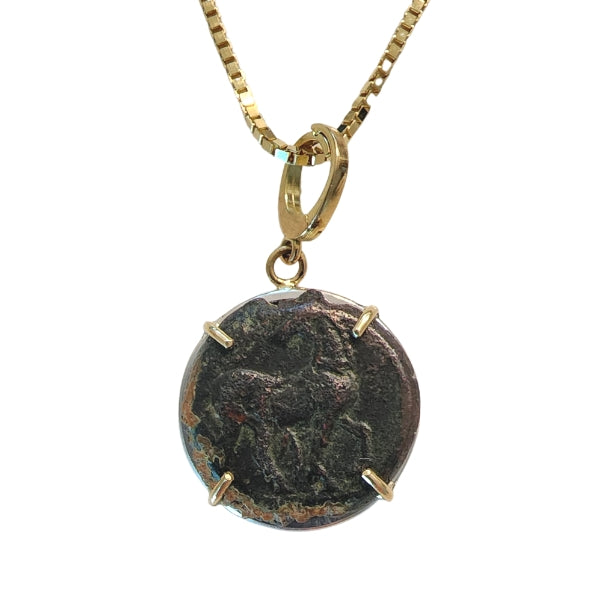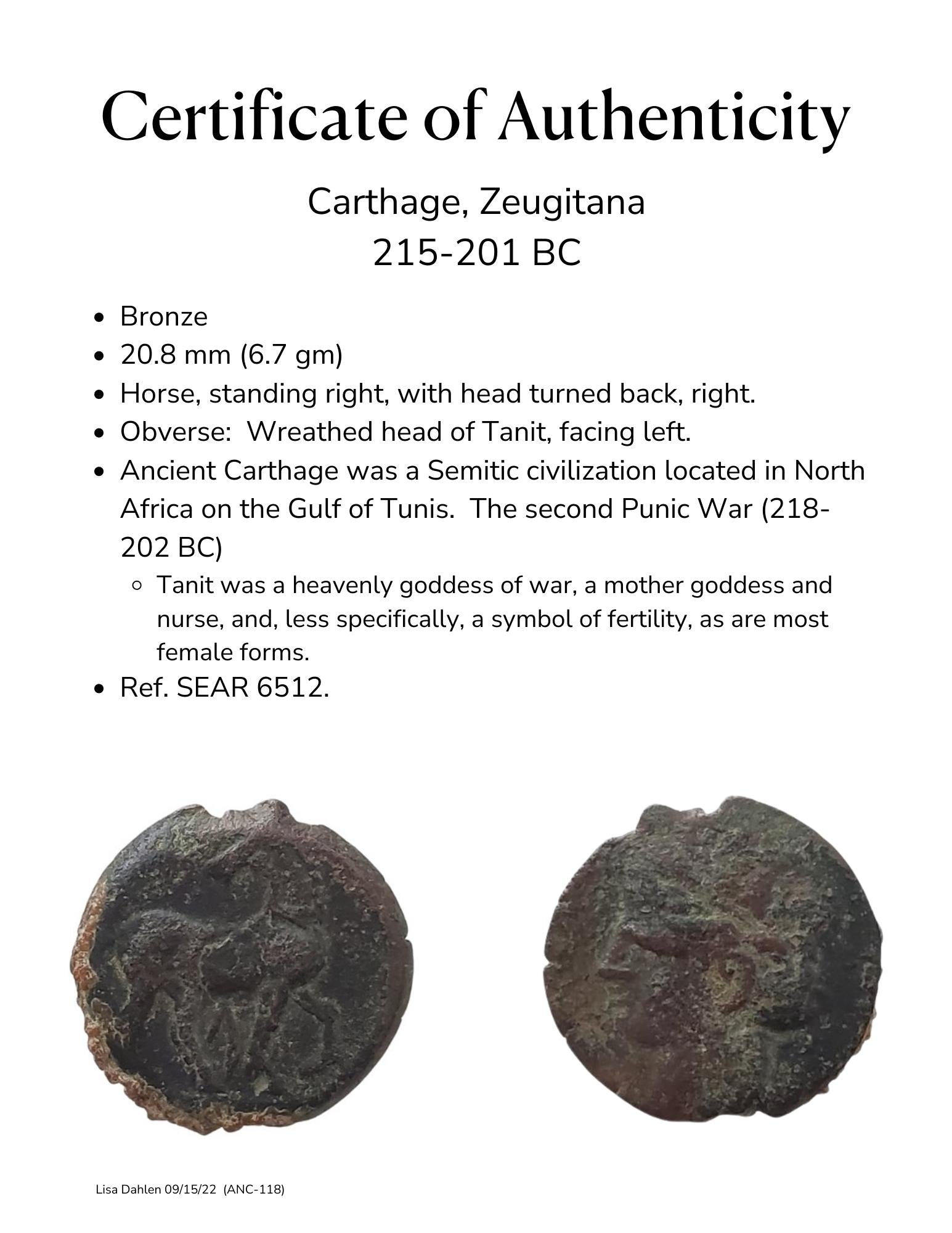Dated: 215-201 BC
Carthage, near modern Tunisia, was founded in c. 814 BC by Dido, sister of King Pygmalion of Tyre. With its superior location near the sea, the Carthaginians expanded their Western Mediterranean trading empire to include Sicily. Curiously, the Carthaginians didn't begin to issue coined money prior to their second invasion of Sicily in 409 BC. The style of artwork indicates that Greek artists were employed in the Carthaginian mints.
Tanit was the chief goddess of Carthage, equivalent to Astarte. She was a mother goddess and a goddess of war, and fertility symbols often accompany representations of her.




















